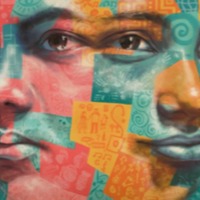
Santiago
There are an estimated 403,000 people living in conditions of modern slavery in the United States (GSI 2018). The US attracts migrants and refugees who are particularly at risk of vulnerability to human trafficking. Trafficking victims often responding to fraudulent offers of employment in the US migrate willingly and are subsequently subjected to conditions of involuntary servitude in industries such as forced labour and commercial sexual exploitation. Santiago travelled from Mexico to the United States and was trafficked into forced labour in California when he was 21 years old. Without papers, Santiago was vulnerable. When he asked his employer for his salary, she called immigration and had him deported, then arranged for him to cross back and then kept him in debt bondage for the expenses of his journey.
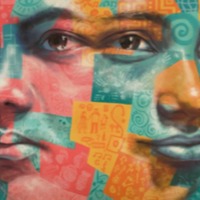
Jose
There are an estimated 212,000 people living in modern slavery in Malaysia (GSI 2018). The majority of those exploited are migrant and undocumented workers in the country. Foreign workers constitute more than 20 percent of the Malaysian workforce and typically migrate voluntarily—often illegally—to Malaysia from Bangladesh, India, Nepal, Burma, Indonesia, the Philippines, and other Southeast Asian countries, mostly in pursuit of better economic opportunities. Some of these migrants are subjected to forced labour or debt bondage by their employers, employment agents, or informal labour recruiters when they are unable to pay the fees for recruitment and associated travel. Jose travelled to Malaysia for work through an agent who, unbeknownst to him. had obtained a fake permit. When he tried to return home, he was arrested, and his money was stolen by authorities.
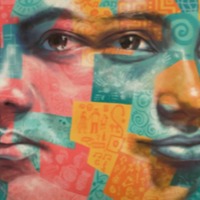
Hussain
There are an estimated 212,000 people living in modern slavery in Malaysia (GSI 2018). The majority of those exploited are migrant and undocumented workers in the country. Foreign workers constitute more than 20 percent of the Malaysian workforce and typically migrate voluntarily—often illegally—to Malaysia from Bangladesh, India, Nepal, Burma, Indonesia, the Philippines, and other Southeast Asian countries, mostly in pursuit of better economic opportunities. Some of these migrants are subjected to forced labour or debt bondage by their employers, employment agents, or informal labour recruiters when they are unable to pay the fees for recruitment and associated travel. Husain travelled to Malaysia through an agent in search of work to help support his family. Upon arrival, he was taken to a holding area at the airport with up to 200 other people. The next day the employer came, and Husain was taken to a house where he was kept for a further six days and his passport was confiscated. When the employer returned, he told the people to leave and find their own work and Husain had to buy his passport back to return home.
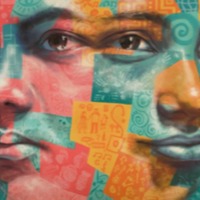
Thiri
There are an estimated 212,000 people living in modern slavery in Malaysia (GSI 2018). The majority of those exploited are migrant and undocumented workers in the country. Foreign workers constitute more than 20 percent of the Malaysian workforce and typically migrate voluntarily—often illegally—to Malaysia from Bangladesh, India, Nepal, Burma, Indonesia, the Philippines, and other Southeast Asian countries, mostly in pursuit of better economic opportunities. Some of these migrants are subjected to forced labour or debt bondage by their employers, employment agents, or informal labour recruiters when they are unable to pay the fees for recruitment and associated travel. Thiri came to Malaysia in 2007 from Myanmar without documents. He was brought to immigration officials and was told he was being deported to the Thai-Malaysian border. However, he was forced into the back of a vehicle and taken to a house where traffickers demanded money to go back to Malaysia. Those that could not pay, including Thiri were kept in the house and threatened with forced labour. Thiri and six others tried to escape and have the traffickers arrested but police were involved in the trafficking and they were taken back to the house where they were being kept. Thiri was forced to cook and clean, sell drugs, and become the traffickers’ ‘bodyguard,’ beating new arrivals who also could not pay the fee to return to Malaysia. Eventually Thiri was able to escape.
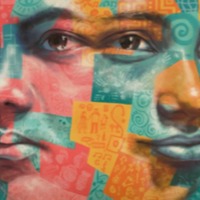
Ms R
There are an estimated 403,000 people living in modern slavery in the United States (GSI 2018). Sex trafficking exists throughout the country. Traffickers use violence, threats, lies, debt bondage and other forms of coercion to compel adults and children to engage in commercial sex acts against their will. The situations that sex trafficking victims face vary, many victims become romantically involved with someone who then forces them into prostitution. Others are lured with false promises of a job, and some are forced to sell sex by members of their own families. Victims of sex trafficking include both foreign nationals and US citizens, with women making up the majority of those trafficked for the purposes of commercial sexual exploitation. In 2015, the most reported venues/industries for sex trafficking included commercial-front brothels, hotel/motel-based trafficking, online advertisements with unknown locations, residential brothels, and street-based sex trafficking. Ms R moved to the United States from Somalia with her mother and siblings when she was 12 years old. She became involved in sex work at the age of 13 in order to help her mother.
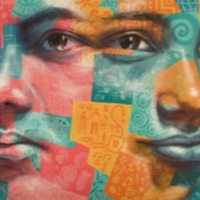
Gracie
It is estimated that there are over 9.2 million people living in conditions of modern slavery across Africa, with 101,000 of these in Central African Republic (GSI 2018). When considering forms of modern slavery, the rate of forced marriage (4.8 victims per 1000 people) was higher than the rate of forced labour (2.8 victims per 1000 people). Over half of all victims of forced labour were held in debt bondage, with similar proportions of men and women in the region trapped through dept. An estimated 400,000 people in Africa were victims of forced sexual exploitation. Within the region, Eritrea, Burundi, and Central African Republic were the countries with the highest prevalence of modern slavery; however, Nigeria and the Democratic Republic of the Congo had the highest absolute number and accounted for over one-quarter (26.3 percent) of all victims in the region. Gracie was 11 when her family was killed due to political and ethnic tension in Central Africa. A family friend took her to a neighbouring country to live with a woman where she was forced to provide sexual services to men. After two years in this brothel, Gracie was taken by a man called Abasi to London where she was once again forced in to prostitution. Gracie was able to escape after a year of sexual abuse and confinement. Told she should seek asylum Gracie appealed to the immigration office, however her passport had been faked to state she was 22 rather than 15 and she was arrested for document forgery. With the help of the NSPCC and a solicitor, Gracie was able to challenge local child services who stated she was an adult and able to find a safe place to live.
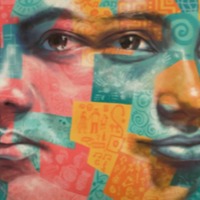
Ko Wunna
Foreign workers constitute more than 20 percent of the Malaysian workforce and typically migrate voluntarily—often illegally—to Malaysia from Bangladesh, India, Nepal, Burma, Indonesia, the Philippines, and other Southeast Asian countries, mostly in pursuit of better economic opportunities. Some of these migrants are subjected to forced labour or debt bondage by their employers, employment agents, or informal labour recruiters when they are unable to pay the fees for recruitment and associated travel. Ko Wunna is a 28-year-old resident of Burma's former capital, Rangoon, who was trafficked to Malaysia by gangs importing illegal workers in a constantly revolving racket in which, former participants say, the Malaysian police are also complicit. Here, Ko Wunna about his experiences over three months working for a trafficking gang in the region in and around northern Malaysia's Kedah province, which borders Songkhla and Yala provinces in Thailand. He reveals that illegal migrants who don't come under the aegis of one gang are vulnerable to worse exploitation by others.
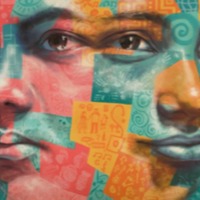
Ellie
The UK National Crime Agency estimates 3,309 potential victims of human trafficking came into contact with the State or an NGO in 2014. The latest government statistics derived from the UK National Referral Mechanism in 2014 reveal 2,340 potential victims of trafficking from 96 countries of origin, of whom 61 percent were female and 29 percent were children. Of those identified through the NRM, the majority were adults classified as victims of sexual exploitation followed by adults exploited in the domestic service sector and other types of labour exploitation. The largest proportion of victims was from Albania, followed by Nigeria, Vietnam, Romania and Slovakia. Ellie was trafficked from Africa to the UK where she was forced in to commercial sexual exploitation. Here Ellie recounts her experience with law enforcement after escaping from her traffickers.

Judith Daluz
There are an estimated 57,700 people in modern slavery in the US according to GSI estimates. The US attracts migrants and refugees who are particularly at risk of vulnerability to human trafficking. Trafficking victims often responding to fraudulent offers of employment in the US migrate willingly and are subsequently subjected to conditions of involuntary servitude in industries such as forced labour and commercial sexual exploitation. In 2005 Judith was living in the Philippines when her sister told her about a job in New York working for a diplomat family. While her sister warned her that the advertised income was just for show, it was still more than Judith could make in the Philippines and she decided to go. Upon arrival, her passport was confiscated, she was forced to work 14 to 18 hours a day, seven days a week with no rest. Judith was deprived of food and subjected to verbal abuse. Judith finally escaped on July 26th 2007.

Nena Ruiz
There are an estimated 57,700 people in modern slavery in the US according to GSI estimates. The US attracts migrants and refugees who are particularly at risk of vulnerability to human trafficking. Trafficking victims often responding to fraudulent offers of employment in the US migrate willingly and are subsequently subjected to conditions of involuntary servitude in industries such as forced labour and commercial sexual exploitation. Nena Ruiz was in the Philippines struggling for money after her business partner stole all of her savings when her cousin told her about a job in the United States. She was told that she would be assisting her employer's elderly mother, however upon arrival in San Francisco, she was informed that she would be working as a domestic helper in Los Angeles. Nena was flown to L.A. and her passport was confiscated by her new employer. She was forced to work long hours with no rest and was subjected to physical abuse. Nena was finally able to escape her situation when her neighbours called the police.

Evelyn (Narrative 2)
The United States is a popular destination country for people searching for job and education opportunities and a better life. Labour trafficking exists in multiple forms including domestic servitude, forced labour in agriculture, fishing, and construction across the United States, with domestic servitude being one of the most difficult to detect as traffickers are able to keep people isolated and intimidated. Among those trafficked for domestic servitude in the US are children, lured to the US with the promises of a brighter future. At 9 years old Evelyn Chumbow was presented with an opportunity to travel from Cameroon to the United States to receive an education. Dreaming for the best for their daughter, her parents packed up her belongings and put her on a plane with a Cameroonian recruiter. However, when Evelyn reached the US she was forced to cook, clean and take care of the children of the recruiter. Never paid for her work and subjected to daily beatings Evelyn never received the education she was promised. After 7 years of domestic servitude, Evelyn was able to escape. She is now a vocal survivor activist working to raise awareness and educate on modern slavery.
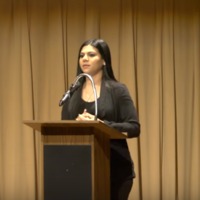
Shyima
Egypt is a source, transit and destination country for women and children trafficked for the purposes of forced labour and sexual exploitation. Egyptian children are recruited for domestic and agricultural labour with some of these children facing conditions indicative of involuntary servitude such as restrictions on movement, non-payment of wages, threats and physical or sexual abuse. Families in remote villages across Africa send their children to work in cities for extra money, a custom that has led to the spread of trafficking as wealthy Africans accustomed to employing children immigrate to the US. It is estimated that 10 000 forced labourers in the US are trapped in domestic servitude. Shyima was just 8 years old when her family sold her into slavery to settle a debt. She was then smuggled into the US and held as a domestic slave in California. She was denied medical care, proper nutrition, an education, and her childhood
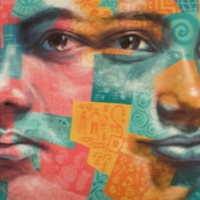
Sara A.
Like hundreds of others, Sara came to the UK to work for a wealthy family as a domestic worker. Instead she found herself trapped in the nightmare of domestic slavery. Hundreds of domestic workers from overseas find themselves in the UK working for employers that abuse them, afford them little or no pay and often lock them in the very homes they are working in. Currently, UK law stops migrant domestic workers from leaving these employers. The tied visa system in the UK means they have to remain with the employer they arrived with.
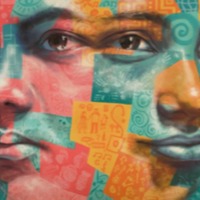
Sar
The Philippines has one of the largest migratory populations with their national economy largely depending on Overseas Filipino Worker's (OFW) remittances. The OFWs have been deemed the 'new heroes' of the Philippines' economy. However, some OFWs are subjected to exploitation throughout the Asia-Pacific, Europe, North America and the Middle East. Sar was lured abroad with promises of well-paid work, which she wanted to help pay for her grandmother’s hospitalisation. Instead, she had her passport and cell phone confiscated and was pressured to engage in sex work. Her account describes potential corruption of the immigration office, and problems with trying to reintegrate into her former community.
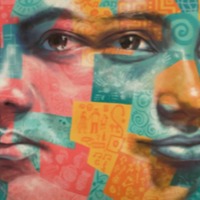
Rohiti
Significant numbers of domestic workers are brought to the UK each year, including an unknown number who travel into and out of the UK with the families they are working for in other countries. In the UK, migrant domestic workers are currently tied to their employer by the immigration rules, increasing their vulnerability to exploitative practices by dissuading workers to come forward and risk deportation. Kalayaan, a UK-based NGO for migrant domestic workers, found high levels of exploitative treatment from employers in a 2015 study of their domestic worker clients. However, the consistently higher rates of abuse experienced by those on tied visas indicate an urgent need to review the current system. Rohiti was exploited in domestic work in Hong Kong and the UK, before running away. She explains that she is unable to pursue her employers because she is unable to stay in the UK after her visa expired.
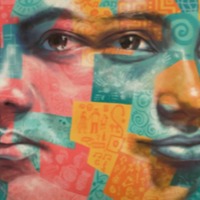
Hung
Cases of modern slavery have been uncovered in diverse sectors and locations of the United Kingdom—from Vietnamese children locked into Manchester flats to grow cannabis to Albanian women and girls sexually exploited in the London sex industry, and to the hundreds of men working low or semi-skilled jobs trapped in situations of debt bondage. The National Crime Agency estimates 3,309 potential victims of human trafficking came into contact with the State or an NGO in 2014. The latest government statistics derived from the UK National Referral Mechanism in 2014 reveal 2,340 potential victims of trafficking from 96 countries of origin, of whom 61 percent were female and 29 percent were children. Hung’s experience demonstrates various difficulties of being both a child survivor of slavery and an immigrant without legal status, especially those who do not speak the language of the destination country. In Hung’s case, his age could not be verified by authorities, and therefore he was not treated as a minor. Despite eventually being released from prison, he still has a criminal record.
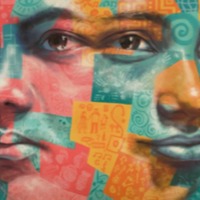
Valdete
Born in Albania, Valdete was trafficked into Greece, where Albanian victims are also trafficked in from Nigeria, and then into Italy. Many women are trafficked into richer Western European countries from the poorer Eastern countries, including Albania. The fall of communism in 1991 led to a rise in organized crime in Albania: in 2001 it was estimated 100,000 Albanian women and girls had been trafficked to Western European and other Balkan countries in the preceding ten years. More than 65 percent of Albanian sex-trafficking victims are minors at the time they are trafficked, and at least 50 percent of victims leave home under the false impression that they will be married or engaged to an Albanian or foreigner and live abroad. Another ten percent are kidnapped or forced into prostitution. The women and girls receive little or no pay for their work, and are commonly tortured if they do not comply.